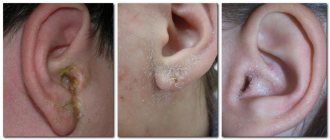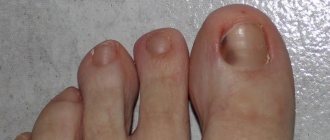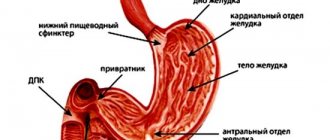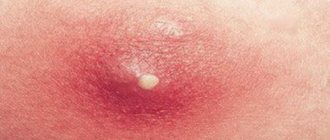The core of the boil is one of its elements. It appears at the second, purulent-necrotic stage of this disease. When it is completed, an abscess forms on the skin surface. The pus located inside this formation, similar to a greenish-yellow “column,” is called a core. It is an object consisting of inflamed cells, sebaceous gland secretions, epithelium and bacterial elements.
Causes of boils
There are several reasons for the appearance of this formation, the main factors are:
- decreased immunity,
- problems with metabolic processes in the body,
- failure of the hormonal system,
- neglect of personal hygiene rules,
- presence of chronic diseases,
- increased sweating,
- poor nutrition.
Stages of boil development
The development of this formation occurs in several successive stages.
- The formation of a dense infiltrate, which has a bright red color, differs from a classic pimple in more severe pain, which can last 3-4 days.
- Purulent-necrotic stage. This stage, which begins at the end of the fourth day of the disease, is accompanied by the formation of a boil core. A “head” protrudes from the affected area.
- Healing. It occurs only after complete extraction of the contents from the cavity of the formation. The duration of this stage is 2-3 days, and in advanced and particularly difficult situations – longer.
When should a boil be removed?
Despite the spontaneous process of discharge of pus, independent removal of the cone can be dangerous due to disruption of the integrity of the walls of the smallest vessels , especially if the boil is located on the nasolabial triangle.
If you decide to remove purulent masses from a boil at home, wait until the abscess has fully matured and its cover spontaneously collapses.
The danger of carrying out the procedure for removing the rod at home is the possibility of error in determining the stage of maturation of the formation. Intervention into a boil that is at the infiltration stage can result in sepsis and death. Only a surgeon can determine the stage at which the boil is located.
Thus, you can remove the rod without the help of a doctor only after the boil has opened on its own.
What to do to remove the core of a boil at home
Removal of this ugly abscess, which causes discomfort, can be done at home independently. Doctors recommend starting to use stretching ointments, which are made at home or purchased at a pharmacy. Next you need to start removing the pus.
At first glance, the process seems complicated and difficult, but in reality it is not.
- The event can only be carried out if the abscess is fully mature. Signs of maturation are a formed rod, a “head” rising above the abscess, a yellowish color of the formation.
- Take alcohol and cotton wool and disinfect the abscess. Using the same product, treat your hands or wear gloves to prevent infection from entering a fresh wound.
- Using two fingers, press on the edges of the chiri in the place where the redness ends. From the edges you need to move slowly towards the central part. It is forbidden to use nails; the procedure is carried out strictly using the fingertips.
- Remove the released mass with a cotton swab. The fact that the pustular formation has been completely removed will be indicated by protruding blood and a hole after the rod.
- Carefully inspect the released exudate. It should contain not only liquid pus, but also a core. If this does not happen, there is a possibility that the inflammatory process will continue.
- When you are sure that the entire boil has come out, you need to wash the wound using hydrogen peroxide, which will destroy all remaining bacteria. Calendula ointment is applied over the wound, and the area is temporarily covered with a bandage.
If the pimple is 100% ripe, squeezing it out will not be difficult.
Important to know! You need to make sure that there are no remaining parts of the pimple - purulent mass, elements of the stem, otherwise the inflammatory process will continue to develop.
If any changes or complications appear after removal, this is a clear reason to contact your treating specialist.
How to remove the root of a purulent formation?
After the purulent masses have drained, a dense cone (root) is visible in the center of the former boil, which is sometimes penetrated by hair. Do not press on the reddened base of the abscess, trying to squeeze the contents out of it.
If you take up self-medication, wait until the necrotic masses disappear on their own and the cone is almost completely pushed out . In this case, you do not insert the needle into the wound, but carefully pull out the rod. You can remove it if the rod has almost left the wound on its own.
You can remove the rod as follows:
Prepare a sterile fine needle and cotton wool, 0.05% aqueous solution of chlorhexidine digluconate.
- Treat the surgical field with a large amount of solution.
- Gently pry the purulent cone at the top, without touching the walls of the boil, and pull it up.
- After removing the rod, treat the wound with an antiseptic and apply a sterile bandage.
The danger of self-medication lies in the possibility of tearing off the top of the rod. In this case, most of it will remain in the cavity of the boil. Then you will have to wait much longer until the rest of the necrotic masses come out.
There is a risk of damage to the pyogenic capsule surrounding the abscess. In this case, the risk of infection spreading into the blood or underlying tissues is very high. Then a visit to the doctor will be inevitable.
We strongly recommend that you seek help from a doctor instead of self-medication . It may be difficult to do without surgery and antibiotics. Removing the cone at home often leads to relapse of the disease and dangerous complications of purulent infection.
What are the signs of proper boil removal?
People encountering the disease for the first time should know what an abscess looks like, how to remove it, and what should be left after it. Here are some key signs that you did everything right:
- there is a gradual decrease in swelling around the wound,
- the purulent root has jumped out, and when palpating the pimple no seals are observed,
- after squeezing out all the contents, a reddish liquid mixed with blood begins to flow from the wound,
- after 2-3 days, the tubercle decreases in size, and the redness and pain go away.
This often leaves a scar. If problems make themselves felt in the groin area, on the face or neck, you should definitely contact a surgeon, since independent actions are fraught with negative consequences.
Brief information
A furuncle is a purulent inflammation around the hair root. The reason for the development of the pathology lies in pathogenic bacteria that penetrate the hair follicle and, through their vital activity, cause inflammation. Its unpleasant feature is the ability to spread to neighboring follicular sacs.
The abscess looks like a large red pimple, accompanied by pain when touched. Its body consists of a pustule and a rod. A pustule is a bulb filled with pus. Those who encounter an abscess for the first time do not know the main thing - what the core of a boil looks like: a purulent compaction of a yellow or green hue, located along the length of the boil.
To remove the contents, you must wait until it is fully ripe. The degree of readiness of the boil is determined by the “cap” - the top becomes white, because the pus has moved as close as possible to the upper layers of the skin, the swelling around the boil goes away, and the pain intensifies.
Important! Under no circumstances should you puncture an abscess or try to squeeze it out before it has matured.
Furunculosis occurs equally among adults and children. If a child develops a disease, it is recommended that treatment be carried out under the supervision of a pediatrician.
Drug therapy
Among pharmaceutical preparations, Vishnevsky ointment, ichthyol ointment, and external medications based on syntomycin and streptocide are widely used. These compounds relieve inflammatory symptoms and reduce pain by drawing out pus. In especially dangerous situations, antibiotics are prescribed - penicillin, ampicillin, amoxicillin, tetracycline, gentamicin.
Their use occurs in the form of a compress. A small amount of the composition is squeezed onto a cotton pad, then it is applied to the wound and fixed with a bandage or bactericidal patch. To prevent the abscess, when it ruptures on its own, from staining clothes, shoes, and bed linen, it is recommended to constantly apply gauze bandages to it. This will allow the wound to close and the pus to drain onto the dressing material.
Means for the treatment of furunculosis
You can speed up the maturation of a boil with the help of ointments. They relieve inflammation and swelling of soft tissues, thereby reducing pain, draw out pus and provoke an independent breakthrough of the boil. Adherents of traditional medicine can prepare compresses according to the recipes below. Modern medicine offers a list of ointments that draw out pus, which can be purchased at any pharmacy at an affordable price.
Surgical removal of the rod
At first, the developing disease may be confused with an ordinary pimple, but it quickly begins to grow, break out and become very painful. This forces many patients to consult a dermatologist. At the first stage, the doctor only observes the disease and prescribes internal and external treatments. If necessary, he can prescribe an operation and open the abscess to allow the pus to come out. Rehabilitation plays an important role, because the outcome of treatment depends on the correctness of the procedures carried out at this stage. The patient must periodically treat the wound with medications prescribed by the doctor and regularly change the dressing.
Useful video
See more about removing the boil stem in the video below:
The core of the boil is one of its elements. It appears at the second, purulent-necrotic stage of this disease. When it is completed, an abscess forms on the skin surface. The pus located inside this formation, similar to a greenish-yellow “column,” is called a core. It is an object consisting of inflamed cells, sebaceous gland secretions, epithelium and bacterial elements.
Traditional medicine recipes
The following folk recipes will help relieve the symptoms of the disease and eliminate inflammation.
- Aloe. The pulp of this plant is taken, cleared of the dense crust, and then applied to the abscess and secured with a bandage or adhesive plaster. The compress must be changed every few hours.
- Golden mustache. The leaves of the plant are finely chopped and then applied to the abscess in the form of a paste. From above, all this is covered with a gauze bandage. The change is carried out at the same frequency as in the previous recipe.
- A mixture of onions and garlic. Take a clove of garlic and several layers of onion, grind it all to a pulp and dilute with 1 tbsp. l. vegetable oil. The mixture is used as a compress, which must be applied regularly to the formation.
The treatment seems simple, and when applied, the abscess matures in just 4-7 days. Sometimes, after using folk recipes, the boil opened on its own. After this, treatment should be stopped and hydrogen peroxide should be used to treat the wound.
Medications that accelerate the maturation process
In the treatment of pustular skin lesions, local therapy takes a leading place. When a boil bursts, the following medications are recommended:
| Detoxification and adsorbing solutions | Hypertonic sodium chloride 0.9% and 10% |
| Alcohol solutions of aniline dyes |
|
| Disinfectant pastes |
|
| Anti-inflammatory ointment forms |
|
| Antimicrobial ointments |
|
| Proteolytic enzymes | |
| Tissue regeneration stimulators in the form of ointments |
Local therapy is carried out for any form of the disease when a boil opens, regardless of the patient’s age. Its main tasks are:
- complete cleaning of the resulting cavity from purulent-necrotic masses;
- relapse prevention;
- acceleration of healing;
- preventing the development of complications.
A big advantage of local exposure is the small number of side effects due to minimal absorption of drugs into the bloodstream. This is important when selecting therapy for children.
Systemic medications are indicated for burst boils in 4 cases:
Both medications sold in pharmacies and folk remedies can help chiria ripen faster. When using the former, you should follow the instructions and not exceed the dosage.
When using grandma’s recipes, you should be careful and if your condition worsens, immediately stop using them. Before each procedure, regardless of what treatment method the patient resorted to, inflammation should be treated with a solution of hydrogen peroxide.
Use a moistened cotton swab to wipe the boil from the edges to the middle. To help it mature faster, the patient can use medical remedies, such as:
Most often, certain pharmaceutical ointments are used to treat boils.
Ways to prevent disease
So that furunculosis does not bother you and the inflammatory process does not occur, you must adhere to the simplest preventive measures.
- Follow the rules of personal hygiene. Wash your face and hands with soap after coming from outside, going to the toilet, or contacting animals. Wash yourself regularly.
- Use only clean clothes, underwear and bed linen. Ironing is another important stage, because under the influence of high temperatures all microbes are destroyed.
- Boost your immunity regularly. Sports, training, walks in the fresh air - all this helps to make the body strong and the body resilient.
- Eat right. Provide your diet with vegetables and fruits. Avoid unhealthy foods. If necessary, take vitamin supplements in addition to food.
- To avoid secondary damage, when removing the growth, make sure that the root is completely pulled out. Otherwise, there is a risk of relapse.
Thus, it is best for the abscess to burst on its own and its entire “composition” to break out, leaving behind only a wound. To avoid complications, including death, it is worth considering that it is better to entrust the autopsy procedure to a specialist.
Danger and possible complications
In most cases, inflammation of a small boil does not cause serious problems. However, large structures can lead to blood poisoning and sepsis. Treating boils at home is fraught with additional complications and disorders. Complications are expected based on the location of the boil:
- The facial area (ear, nose, lips) is a dangerous place; infections through the blood vessels quickly reach the cerebral cortex, encephalitis, capillary dysfunction, and meningitis develop. A patient with such ailments experiences nausea, vomiting, and headaches. After 12 hours, elevated body temperature and partial paralysis of the limbs are observed.
- Development of carbuncles. The disease becomes more complicated due to a weakened immune system. A common location is the buttocks. Serious reasons for hospitalization.
- Blood poisoning due to staphylococcal formations. If left untreated, the pathology results in 100% death. Sepsis is accompanied by elevated temperature and severe weakness of the body.
- Ulcerative stage + scarring. The maturation of the rod provokes the rejection of purulent residues from the skin. Over time, the ulcer forms in the form of a crater. The affected area/point becomes scarred. The area looks ugly.










